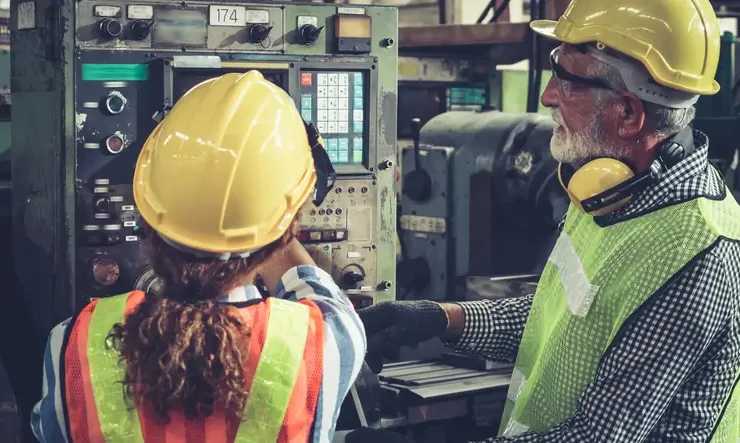Crane Accidents: Facts And Statistics
Crane operations are an integral part of construction and industrial activities, facilitating the movement of heavy materials and equipment. While cranes are essential tools, they also pose significant risks to operators, workers, and bystanders. These hazards can often result in crane accidents. Understanding the statistics regarding crane-related injuries and fatalities is crucial to improving safety measures within the industry. This article delves into crane fatality statistics and injury and also sheds light on the best tips to prevent crane-related accidents.
Significant Statistics of Crane Deaths and Injuries
Below you will read some significant crane fat statistics to give a clearer picture that how crane becomes the dominant reason for fatalities and rates;
- According to the Census of Fatal Occupational Injuries (CFOI), there were 297 deaths attributed to cranes that happened between 2011 to 2017, which is an average of almost 42 deaths each year.
- As per the research of the Bureau of Labor Statistics (BLS), there were approximately 490 cases related to non-fatal incidents with cranes in 2020 that resulted in workers’ increase in absenteeism.
- In crane-related injuries, there were 91 of these incidents (out of 154) the worker was hit by a piece of equipment or a falling object.
- Accidents with cranes are a direct result of negligence. 90% of crane accidents are caused by human mistakes, according to the Crane Inspection and Certification Bureau (CICB). Employers must ensure that personnel are appropriately trained and that the crane is safe to use.
Crane Fatalities: A Grim Reality
Every year, the construction and industrial sectors experience a substantial number of crane-related fatalities. These fatalities are often the result of various factors, including human error, equipment malfunction, and adverse weather conditions. Analyzing the crane fatality statistics is essential to grasp the extent of the problem.
According to Safe Work Australia (2013), 359 construction workers died in Australia from 2004 to 2013 as a result of occupational diseases. Construction contributed to 14 percent of all fatalities among workers during this time. A similar picture is painted by the volume of severe claims. Safe Work Australia reported an average of 13,105 serious cases over a period of five years from 2006 and 2011 (2013).
Crane Injuries: A Silent Epidemic
While crane fatalities are highly visible and grab headlines, crane-related injuries occur more frequently and often go unnoticed. Crane injuries can vary in severity, from minor incidents to life-altering accidents. Understanding the statistics of crane injuries can provide insights into the common types of incidents and help guide preventive measures.
The majority of accidents included shifting loads using mobile cranes; this percentage accounts for 72% of all accidents globally (22% in the EU, 34% in North America, and 15% elsewhere in the world). Tower cranes account for the second-highest percentage, which is 22% (8% in the European Union, 8% in North America, and 6 percent in the other regions of the world).
What are Some Common Types Of Crane Accidents?
While crane can be in variety of forms, the most common crane accidents include:
- Load dropping incidents due to improper rigging or overloading.
- Boom collapses caused by exceeding weight limits or unstable ground.
- Crane tip-overs resulting from imbalanced loads or operator error.
- Contact with power lines leading to electrocution or electrical hazards.
- Falls or personnel being struck by moving parts due to inadequate safety measures.
- Mechanical failures such as brake malfunctions or hydraulic issues.
- Overturning due to high winds or unstable working conditions.
7 Tips to Prevent From Crane Related Accidents
Here are few ways to stop crane accidents and prevent workers from being injured.
1. Choose Appropriate Crane
One of the most important techniques to prevent workplace crane accidents is choosing the right crane for operational purposes. As you know, there are several types of cranes used in the construction process. However, the majority of employees do not know how to use the manual and fix cranes. So, it is essential to take expert guidance before using any crane, this will surely have a significant impact on decreasing workplace fatalities and injuries.
2. Train Your Workers Promptly
Another critical aspect to ensure the worker’s safety from crane-related incidents is; to ensure that operators are well-trained and certified. However, operating a crane requires a high level of skill and knowledge. Operators should be trained to understand the crane’s load limits, safe operating procedures, and emergency protocols. They should also possess the necessary certification that demonstrates their competence to operate a crane.
3. Regularly Inspect Your Crane
Before each shift and after any significant maintenance, cranes should undergo thorough inspections. Bear in mind that regular crane inspection is the key to keeping your workers safe from workplace hazardous injuries. However, the crane inspection includes checking for any signs of wear and tear, loose bolts, damaged wires, and hydraulic leaks. Regular inspections help identify potential issues before they become major safety hazards.
4. Promote Workplace Safety Training
Workplace safety training is imperative to promote the safety and health of employees. The Occupational Safety and Health Administration (OSHA), is a reputable agency that establishes to endorse and implement workplace safety worldwide. If you want to protect your firm from high OSHA penalties, it is the right time to train your employee, otherwise, enrolls them in OSHA 10-Hour safety training courses or OSHA 30-Hour construction safety courses. These courses are highly informative and thought-provoking and educate them about how to use cranes and tips to prevent themselves and others from crane-related hazards and injuries.
5. Use Proper Rigging Techniques
Using the right rigging techniques is crucial for load stability and safety. No matter, whether you are an employee or employer, it is your responsibility to inspect all slings, hooks, and other rigging equipment for damage before use. Ensure that loads are properly secured and balanced to prevent shifting during lifting and transport.
6. Stay Clear Of the Load
Make sure that operators and other personnel should maintain a safe distance from the load. Instruct your workers to stay away from the load area; this is the simplest tip that helps to prevent injuries caused by falling objects. A designated drop zone should be established and clearly marked to keep people at a safe distance.
7. Always Avoid Overhead Power Lines
Crane operators should always be aware of overhead power lines. Coming into contact with power lines can lead to electrocution and fires. Proper planning and safety measures, such as installing barriers or using non-conductive rigging, can help prevent these accidents.
Conclusion
Safety should always be the top priority when operating cranes. Accidents involving cranes can lead to devastating consequences, including loss of life and property damage. By following these crane safety tips, operators and site personnel can significantly reduce the risk of accidents.
Remember that proper training, regular inspections, clear communication, and adherence to safety protocols are essential to maintaining a safe working environment when using cranes. Safeguarding the well-being of all workers and the surrounding environment is a shared responsibility that cannot be overlooked. Enrolling in OSHA safety courses like New York OSHA 30-Hour Construction is your best bet to stimulate safety and health at your workplace.
Sources:





